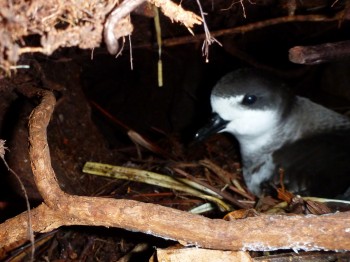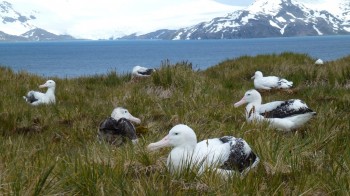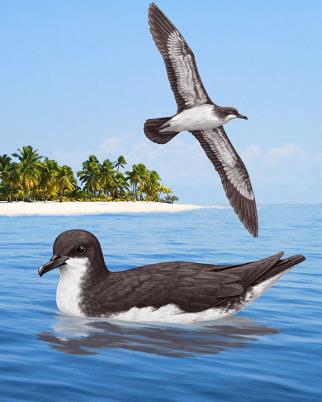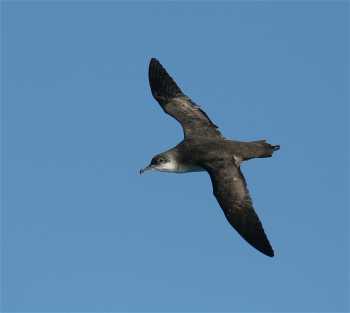A landslip caused by the recent 7.8-earthquake centred on the coastal tourist town of Kaikoura in New Zealand’s South Island is reported to have “wiped away” half of a breeding colony of the Endangered (and locally endemic) Hutton's Shearwater Puffinus huttoni (click here).
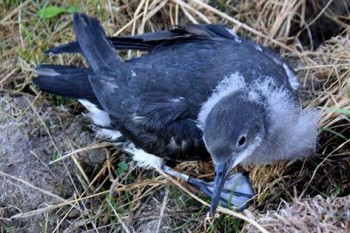
Hutton's Shearwater fledgling, photograph from the Hutton's Shearwater Charitable Trust
Hutton’s Shearwater breeds in the austral summer (September - March) at only two alpine localities 1200–1800 m above sea level in the Seaward Kaikoura Mountains. “This is the only place in the world where this species breeds and its population has been dropping alarmingly for years.” The two colonies together form an Important Bird Area.
Half of the Kowhai Valley colony, the larger of the two, has been “swept away”, according to New Zealand’s Department of Conservation which is currently attempting to gauge how many birds have been lost. The other mountain colony, Shearwater Stream, is not thought to have been affected.
"The total population was only 110 000 -- quite small really, for a shearwater," says Karen Baird of the NGO Forest & Bird (New Zealand’s BirdLife International partner), who predicts that at least 25% of the species’ breeding population will have been lost by the earthquake - although the number could be as high as 49%.
The fenced translocation colony established in 2005 on the Kaikoura Peninsula close to the sea that is managed by the Hutton's Shearwater Charitable Trust is thought to be safe: "It's not a steep site, and it's covered in grass."
In the meantime Kaikoura is near-completely cut off with its coastal access roads blocked by landslips. People are being urged to stay away from DOC-managed tracks and conservation areas in areas affected by the earthquake until further notice. Follow regular updates on the situation from DOC here.
Read past articles in ACAP Latest News on the conservation of Hutton’s Shearwater here.
Selected Literature:
Sommer, E., Bell, M., Bradfield, P., Dunlop, K., Gaze, P., Harrow, G., McGahan, P., Morrisey, M., Walford, D. & Cuthbert, R. 2009. Population trends, breeding success and predation rates of Hutton's shearwater (Puffinus huttoni): a 20 year assessment. Notornis 56: 144-153.
John Cooper, ACAP Information Officer, 18 November 2016

 English
English  Français
Français  Español
Español 